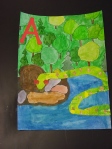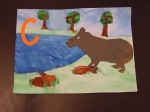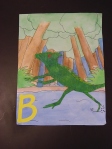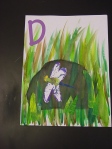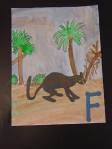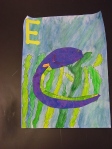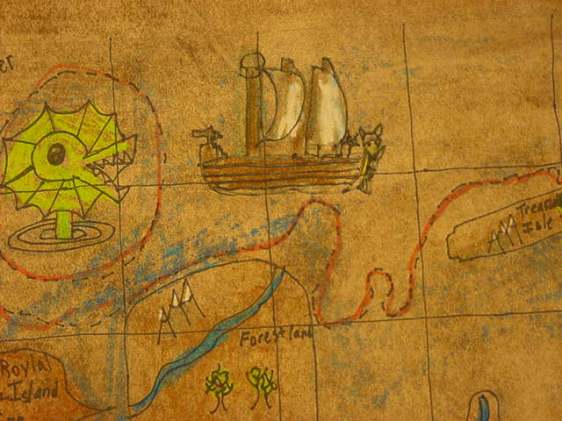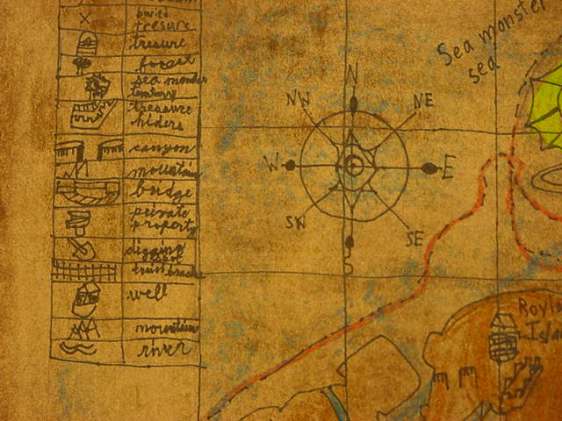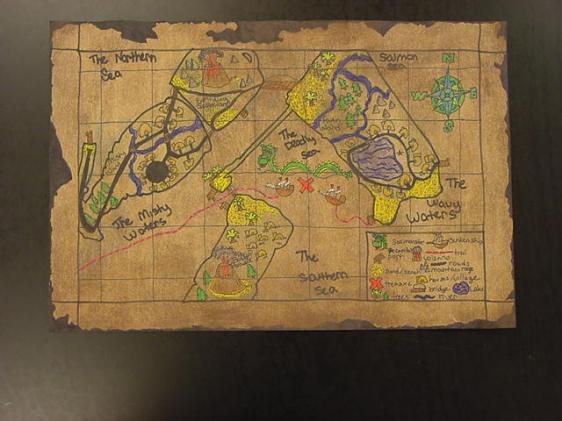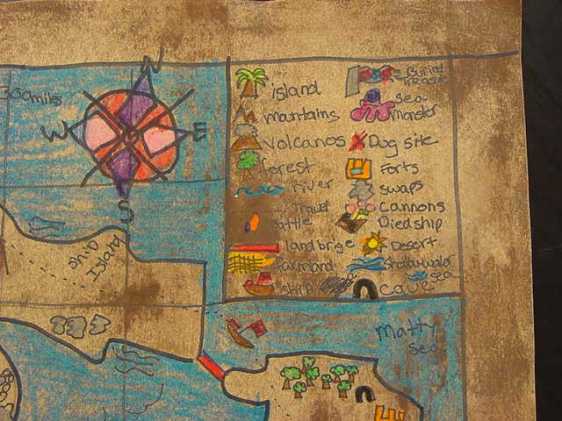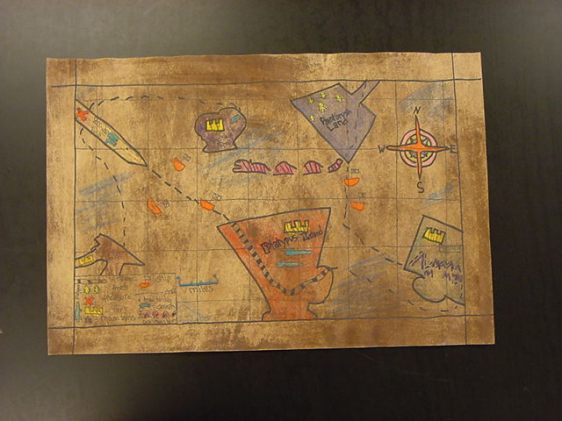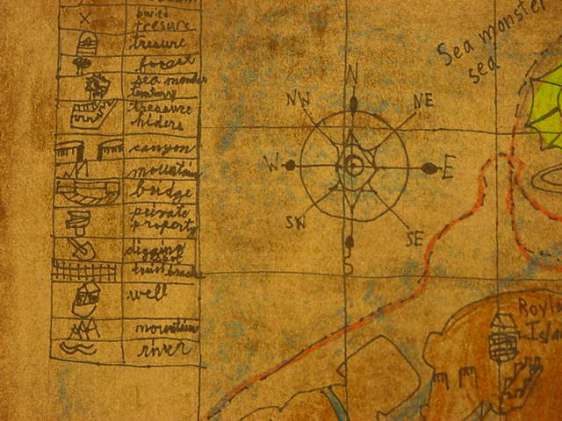I recently had a language arts/global studies teacher ask me if I would be interested in working together to make a book on the Rainforest. After three brainstorming sessions we came up with the idea of making an Alphabet Book.
Students randomly chose a letter of the alphabet. Lists of animals were compiled by both of us to given to the students to choose an appropriate animal. In Language Arts and Global Studies classes students used the computer lab as well as the library to research and print photos of their animals. They composed one page descriptions of their animal, giving details about their physique and where they lived within the rainforest.
Since we were in the process of studying the work of Eric Carle in Art, this lesson fit perfectly into our class. The students had just completed a lesson on color and were well versed in how primary colors are mixed to create secondary and intermediate colors. Contour Line drawings were done in their sketchbooks along with notes on the colors and details of the animals. Students had previously viewed the Eric Carle video, Eric Carle, Picture Writer, showing the artist in his studio creating his free style of painted papers. One art class was spent making these “pretty papers” with various brushes, sponges, and tools incorporating many of Eric Carle’s techniques.
When the students returned to art class the next day and the pretty papers were strewn across the floor. All of the students could see the various colors and textures and chose the ones that they wanted to use. Various papers were pieced together into a collage type rendering of their particular animal. The students worked hard to make the animal as realistic as possible and the results were indeed successful.
